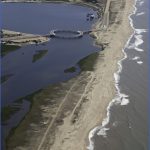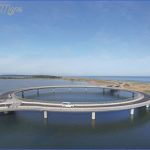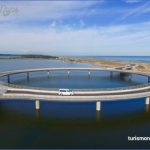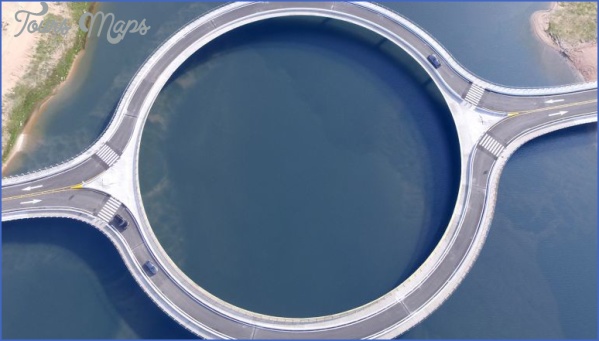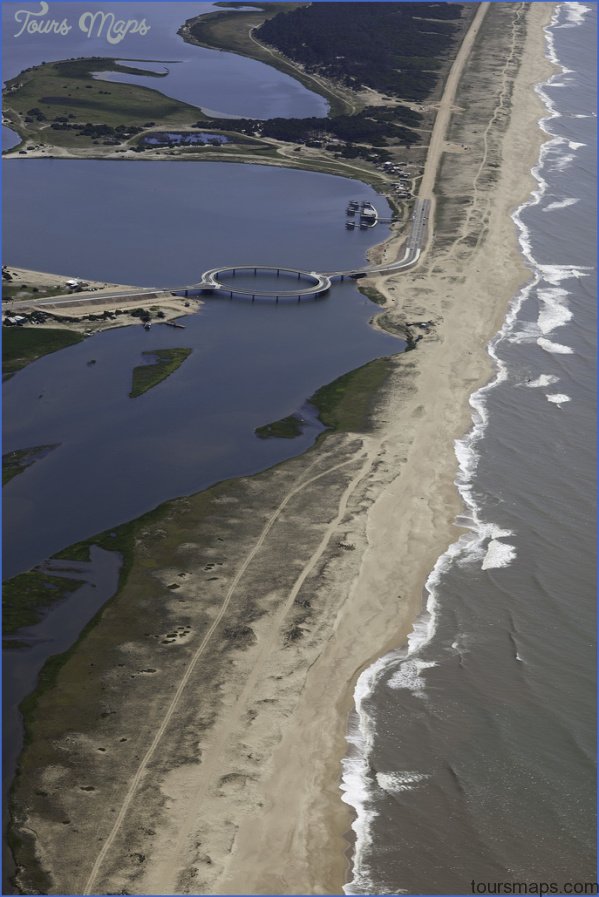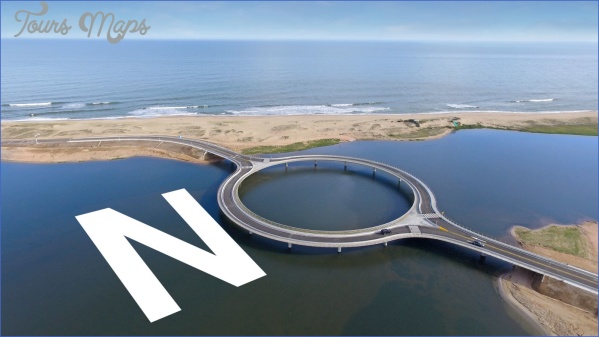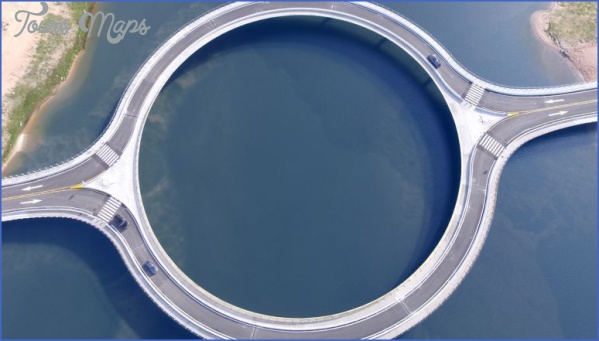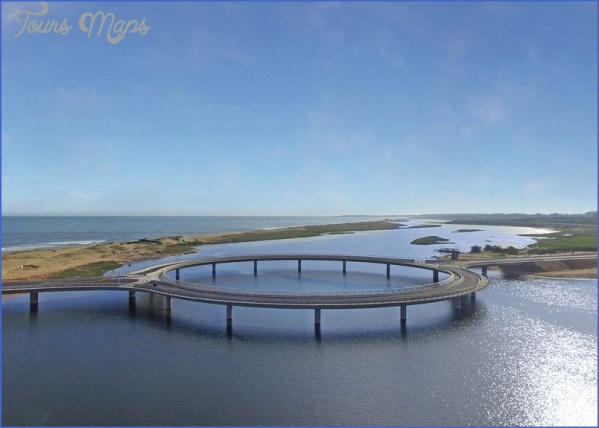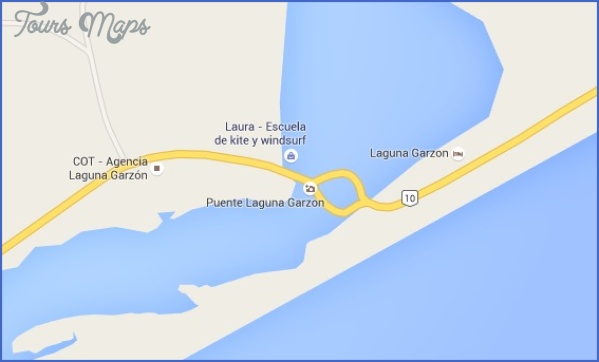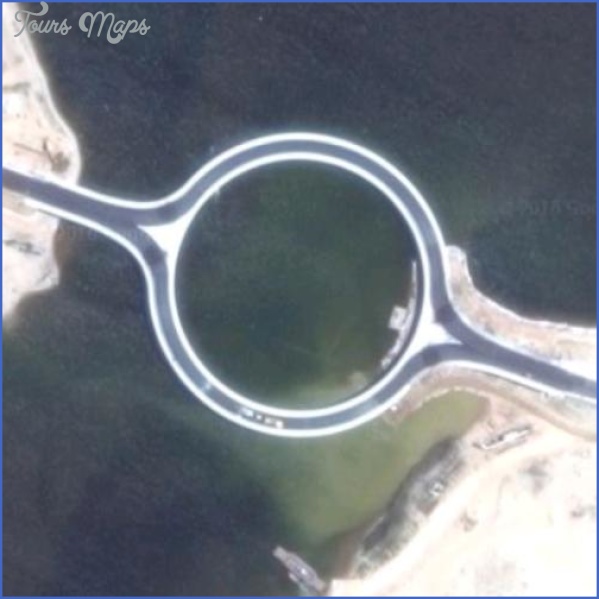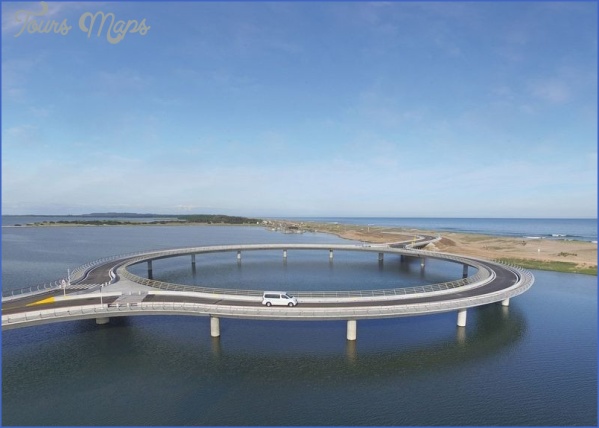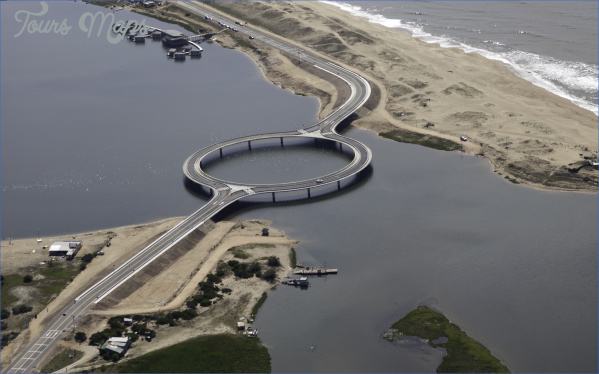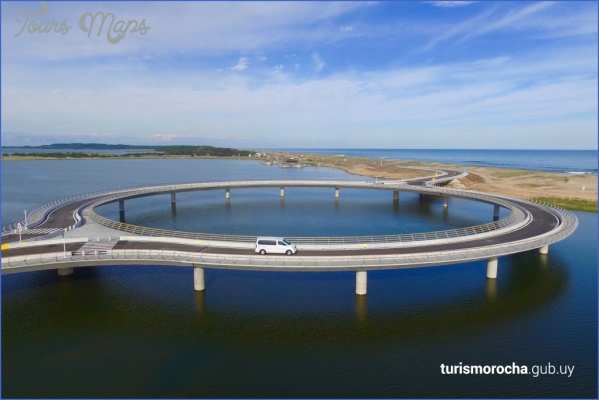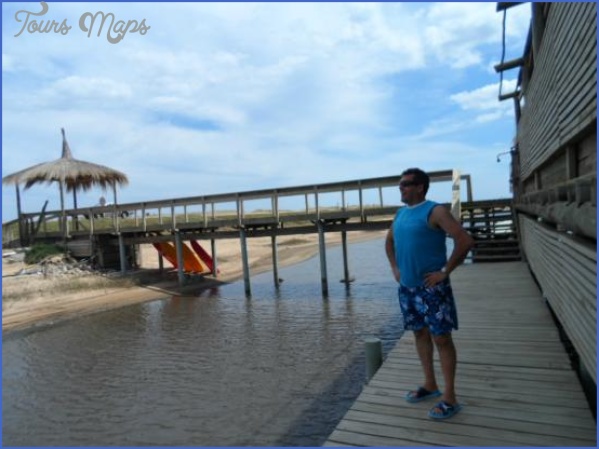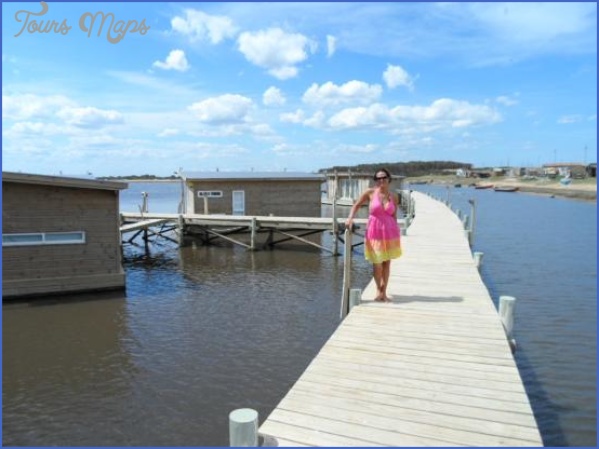LAGUNA GARZON BRIDGE MAP
A bridge’s unusual shape increases vehicular safety and protects local flora and fauna.
A novel circular bridge, “a lagoon within a lagoon,” circumnavigates Laguna Garzon, a coastal waterway in southeastern Uruguay. The area, known for its virgin sandy beaches and ecodiversity, was protected in the past from overdevelopment by virtue of its inaccessibilitycars could cross the lagoon only via a slow raft. Paradoxically, the new bridge’s unusual shape protects the environment but, as a destination structure, may hasten the very effects it seeks to avoid. Uruguay-born, New York-based architect Rafael Vinoly’s intent was to transform a traditional crossing into an event. He said he wanted to “create a pedestrian place in the center where people can sit, fish, bathe, and stay above the water at a unique point of view.” The roadway is 13 feet (4.0 meters) above the water, pending tide levels. Two traffic lanes are sandwiched between pedestrian walkways on both sides, affording 360-degree views and encouraging visitors to use the bridge as a place to walk and wonder.
LAGUNA GARZON BRIDGE MAP Photo Gallery
The Garzon Lagoon is one of a series of lagoon ecosystems along Uruguay’s South Atlantic coast that support biologically diverse habitats of global significance. The 4,448-acre (1,800-hectare) lagoon is a sanctuary for blacknecked swans, snow geese, flamingos, and egrets. Fish, otters, and clams live there too. Consequently, the bridge’s structure was conceived from the outset to minimize environmental impacts. Its circular shape reduced the number of support columns, sixteen of which carry the 663-foot (202-meter)-long roadway. Fewer columns cast fewer shadows on the water, which irritate marine life, and mean fewer obstructions to the natural movement of fish. Above water, that equation is reversed: The structural profile acts as a roundabout that effectively slows traffic, increasing safety and allowing a better look at the tranquil waters. Moreover, by eliminating the starts and stops of more conventional crossings, it lowers vehicle emissions and noise pollution, a boon for those using the pedestrian pathways.
In the circle is hidden a positive possibility of the most primordial kind of knowing.
Vinoly, who spent his childhood here, considered the project a moral obligation in the face of runaway land speculation and lack of planning, and donated his design services. He accepted the project on the condition that control of Route 10, a federal highway that is used to access several beach resorts, be put into the hands of the local municipality so growth in the area could be better controlled. After six years of public hearings, debates, and protests, the Direccion Nacional de Medio Ambiente, the governmental agency that oversees environmental protection, approved the area’s ecological regulations in 2012. Construction of the bridge began in 2014. Although every effort has been made to minimize its ecological impact, and guidelines are in place to control coastal development, the presence of a signature bridge by a master architect is sure to attract new tourists. At the time of its completion, it was estimated that one thousand cars would cross it daily. Eduardo Costantini, who developed Las Garzas, a nearby luxury condominium, invested heavily in the iconic bridge. In a 2015 press release, he described it as “a catalytic factor in driving the development of Rocha’s coastline,” which is protected: “Just 35% of the stretch between the two lagoons can be developed and 50% must be devoted to green areas.”
At night, the bridge appears to cup the lagoon protectively.
The bridge replaces a raft crossing that connected Rocha and Maldonado counties but allowed only two cars to cross at a time.
When viewed from above, the bridge forms a perfect circle. The purity of its minimalist form belies its geometric complexity. CYD Ingenieros served as the structural engineering firm; Saceem constructed it.
“This bridge will be a feather in the caps of Indian and international engineers, for having built the tallest bridge in the world despite extreme challenges. The knowledge gained here will enable the construction of similar bridges in India.”
Maybe You Like Them Too
- Explore Doncaster, United Kingdom with this detailed map
- Explore Arroyito, Argentina with this Detailed Map
- Explore Belin, Romania with this detailed map
- Explore Almudévar, Spain with this detailed map
- Explore Aguarón, Spain with this detailed map


